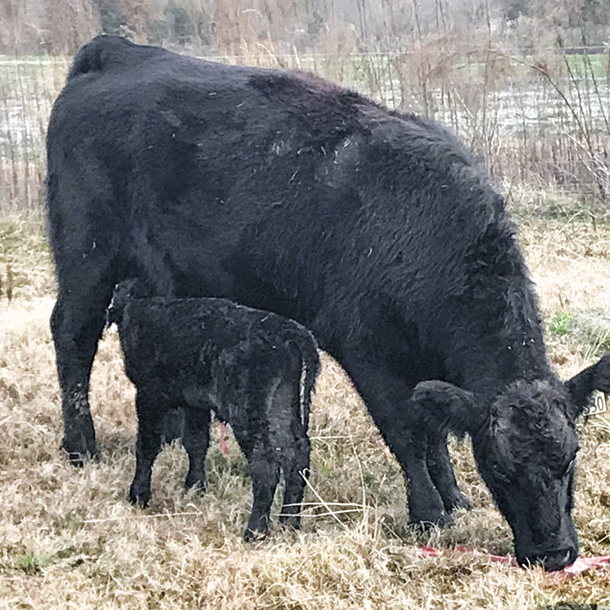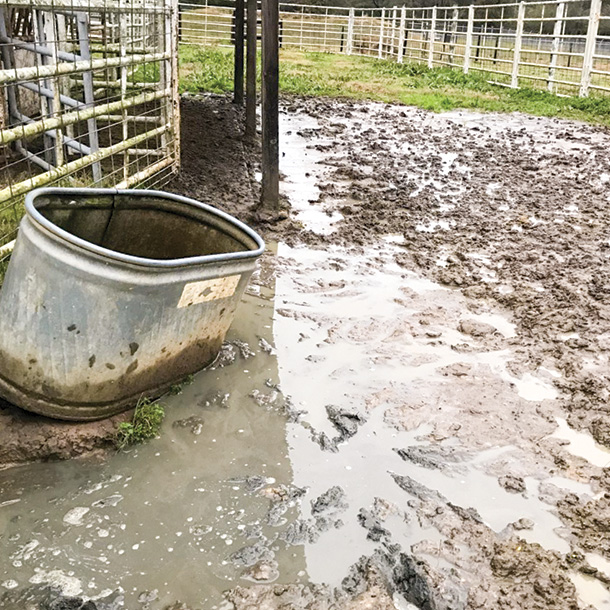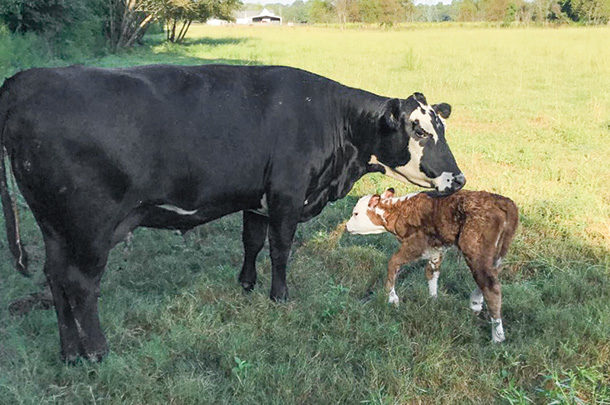Most U.S. cow-calf producers calve in the spring and become familiar with the need for biosecurity and disease control in their newborns. For those practicing fall calving, some concerns remain the same, while other factors challenge health and management processes.
In the southeast U.S., while snow and cold temperatures aren’t as severe as more Northern areas, weather can still affect a calving season, be it spring or fall, says Lee Jones, DVM, associate professor of beef production medicine at the University of Georgia.
“When we talk about biosecurity and disease control, we need to think holistically, understand the interactions of the season, the weather [and] whether the animals are confined, crowded or in an extensive situation like pasture. We have to think about all the different ways these relationships come together to influence the health and well-being of the offspring.”
By the numbers
According to the July 2017 USDA National Agricultural Statistics Service U.S. Cattle Inventory report, in 2016 and 2017, 73% of the total 14 million calf crop were born in the spring versus 27% in the fall. The 3.78 million fall calvers faced issues that while unique, still weighed heavily on disease and death loss.
The most recent 2015 USDA Death Loss in U.S. Cattle and Calves Due to Predator and Nonpredator Causes report states that over 1.22 million beef calves weighing less than 500 pounds died of non-predator causes in 2015, at an estimated cash value of almost $557 million.
Disease challenges
Most of these losses occurred due to illness over the first weeks of life.
“Disease is an equation of resistance and challenge,” Jones explained. “If the resistance is greater than the challenge, then we won’t see disease. If the challenge is greater than the resistance, then we will see it. It drives the whole system and all of its components.”
He describes factors contributing to this ongoing struggle. Calving-ease bulls reduce presentation issues of dystocia as calves are born smaller. Lighter-colored calves fare better in extremely hot, humid weather.
“We can avoid some pathogens, but every season has its tests. There’s no perfect choice. If we want to calve in the fall, October is not far from winter weather. Rain, muddy, cold and wet is a horrible combination. This type of fall weather tasks calves with thermal regulation. They find it tough, plus muddy, contaminated udders become a factor.”
Craig Payne, DVM, at the Veterinary Extension and Continuing Education Department, University of Missouri outlines many factors altering the ability of calves to fight off disease pressures faced during fall months.
“There are some issues in spring calving we don’t necessarily have in fall calving, but the concern in relation to disease is still present. When we deal with neonatal or calf diseases in general, they typically will be scours or calf pneumonia. They are often endemic in cow herds, so we still need to be paying attention to biosecurity no matter the season,” he said.
 Weather and environment play critical roles in fostering a good start for calf-dam health. Photo provided by Lee Jones, University of Georgia.
Weather and environment play critical roles in fostering a good start for calf-dam health. Photo provided by Lee Jones, University of Georgia.
He adds that weather plays a major role in the health of newborn calves, although he doesn’t believe it stirs up problems. Heat stress during the fall months must be considered and planned for. He points to a 2016 Florida study of calf health where dams were exposed to extensive heat stress during the last months of gestation. It found a discrepancy in the amount of colostrum antibody absorption between newborns facing heat stress and those that didn’t.
“When calves are slow to get up and nurse in adverse spring weather, they usually don’t receive adequate colostrum intake. This increases their risk for disease. In the same way, if there’s heat stress in the late stages of gestation, it limits a newborn’s ability to absorb antibodies, again increasing their risk.”
Avoid the concentration of animals
Payne explains the concentration of cattle at any time of year invites disease stresses due to the buildup of pathogens. While management practices and weather events might congregate animals in the spring, hotter fall weather will also cause pathogen magnification.
“Heavy fly populations in fall- calving herds will cause cattle to group as they deal with fly loads. Because of this concentration, we have a buildup of pathogens in the environment and get outbreaks of calf scours because of it.
“Concentration is really the bigger issue,” he stressed. “The effect of coming together as a response to weather provides an amplification of pathogens, which can drive a scours outbreak. Weather doesn’t trigger pathogens to act differently, but it can cause their amplification.”
Jones agrees and suggests that the manipulation of management practices provides a defence against weather-induced factors.
 Fall calving can often occur in harsh, wet surroundings. Make sure muddy conditions do not contribute to a scours problem in the fall. Photo provided by Lee Jones, University of Georgia
Fall calving can often occur in harsh, wet surroundings. Make sure muddy conditions do not contribute to a scours problem in the fall. Photo provided by Lee Jones, University of Georgia
“If animals are crowded, whether summer or winter, we’ll have the consequences of soiled, contaminated calving areas. Plus, if cattle can’t get to shade, we have the added issue of heat stress versus cold,” he said.
He recommends calving heifers earlier and separate from the mature cow group, if possible. Later-calving females could be moved to a different pasture. Sorting pairs with older, more resistant calves separate from younger animals can be a benefit, as it provides an opportunity for immune systems to develop and function better. If supplemental feeding of hay is required, feeders should be moved frequently. Biosecurity and biocontainment measures, including isolation and quarantine, remain critical for any additions.
“It’s one of those things where we might solve one problem and create another by how we deal with the environment and weather. We need to think about how all the parts work together,” Jones said.
Payne adds it’s important to work with a local veterinarian to address specific needs, but the same health management principles used for a spring-calving herd should be applied to fall calving.
“Anything we can do to minimize the concentration of livestock to avoid the amplification of disease is vital,” he said. “Try to keep them spread out to counteract calf scour agents in the environment, or respiratory pathogens in the upper airways. Spring or fall, the biosecurity doesn’t change. It’s more how we prevent these infective contacts from occurring and transferring disease.”









